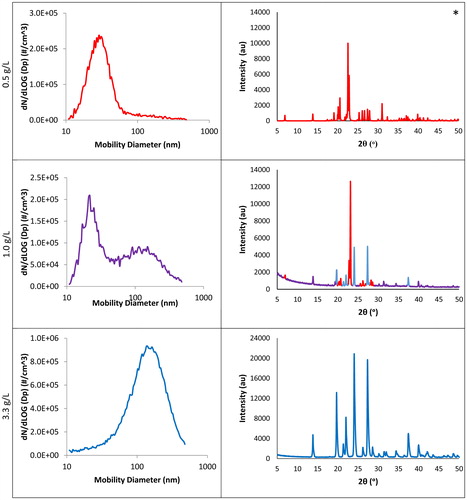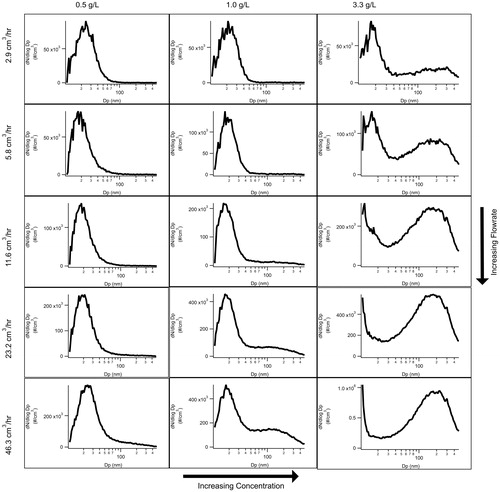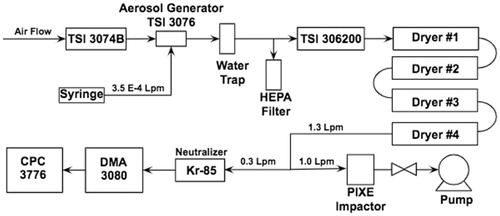Figures & data
Figure 2. SMPS data (left) and PXRD diffractograms (right) for aerosols generated from three different concentrations of aqueous glutaric acid when the syringe flow rate was 0.35 mL per min. At 0.50 g/L in the feed solution, only the alpha polymorph of glutaric acid is present. The PXRD data for this corresponding alpha polymorph marked with an asterisk are drawn from the Cambridge Structural Database (GLURAC06) (Groom et al. Citation2016). The other two PXRD diffractograms are our original data from samples collected when corresponding SMPS peaks were present. For 1.00 g/L, both the alpha and beta polymorphs are present, as shown by the red and blue peaks, respectively. The 3.33 g/L feedstock PXRD is from a sample we collected when solely the larger beta peak was present on SMPS, and this diffractogram matches the beta polymorph from the GLURAC as simulated by the Cambridge Structural Database (Groom et al. Citation2016).

Figure 3. PXRD diffractograms showing the similarity between the (a) glutaric acid sample collected for this experiment and (b) the beta polymorph of glutaric acid from the Cambridge Structural Database (Groom et al. Citation2016).

Figure 4. SMPS data collected with varying syringe flow rates and concentrations of an aqueous solution of glutaric acid in order to see the variations’ effects on particle size distribution. In this figure, the alpha peak is seen at lower concentrations and flow rates. With increasing glutaric acid concentrations, the alpha peak begins to decrease in size as the beta peak is formed and begins to grow until the alpha peak is no longer observed.


